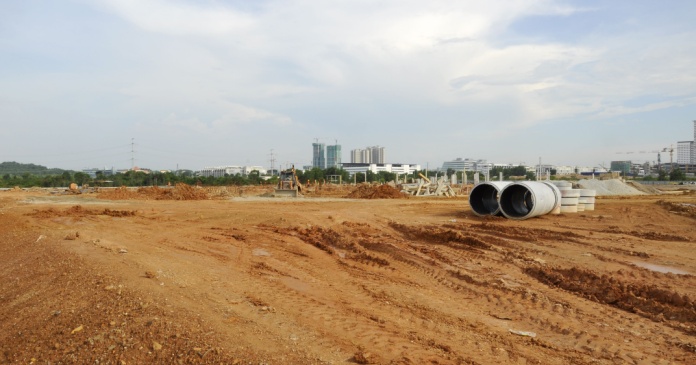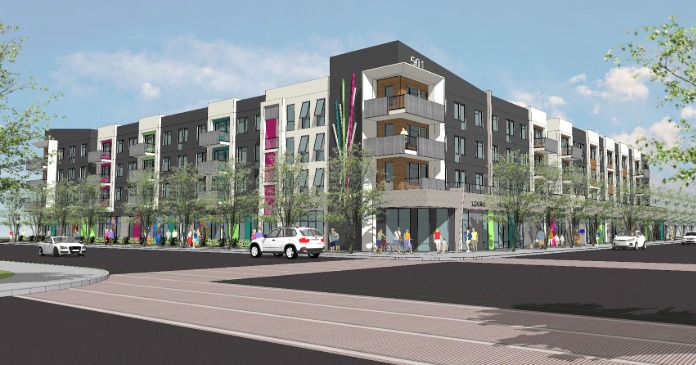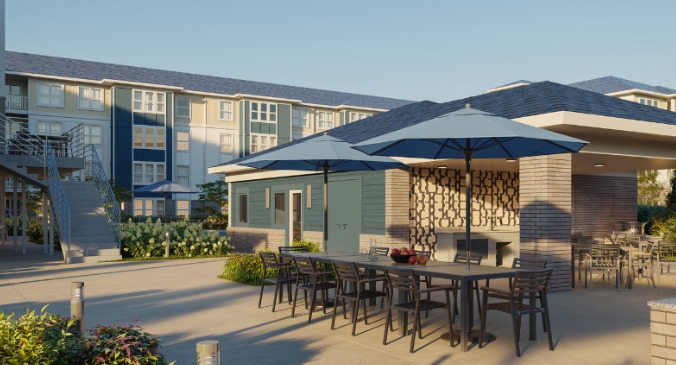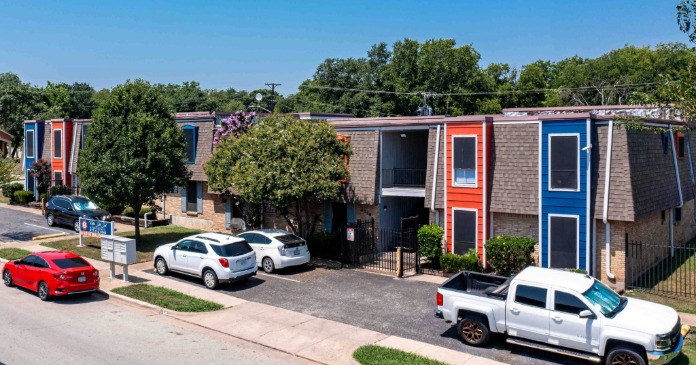Revisions to Fannie Mae’s July housing forecast reduce the number of multifamily starts expected in 2025 and 2026 from those in last month’s forecast. Fannie Mae is now predicting 381,000 starts in 2025 with 380,000 starts in 2026. By contrast, all but one of the quarterly forecasts for single-family housing starts were raised.
Interest rate outlook nearly unchanged
Fannie Mae’s forecasters left their prediction for the trajectory of the Fed Funds rate unchanged from that in last month’s forecast. They predict the Fed Funds rate will fall from its current level of 4.3 percent to an average of 4.0 percent in Q4 2025. They predict the average Fed Funds rate for Q4 2026 will be 3.4 percent.
The forecast for the for the 10-year Treasury rate was lowered slightly. The forecasters lowered their predicted interest rate in Q4 2025 by 0.1 percentage points to 4.3 percent, and they lowered their predicted rate in Q4 2026 by 0.2 percentage points to 4.4 percent. They now expect the rate to average 4.3 percent in 2025 and to average 4.4 percent in 2026.
Multifamily starts forecast reduced
The current forecast for multifamily housing starts is shown in the first chart, below, along with three other forecasts from the last year. Fannie Mae considers any building containing more than one dwelling unit to be “multifamily”, including both condominiums and rental housing units.
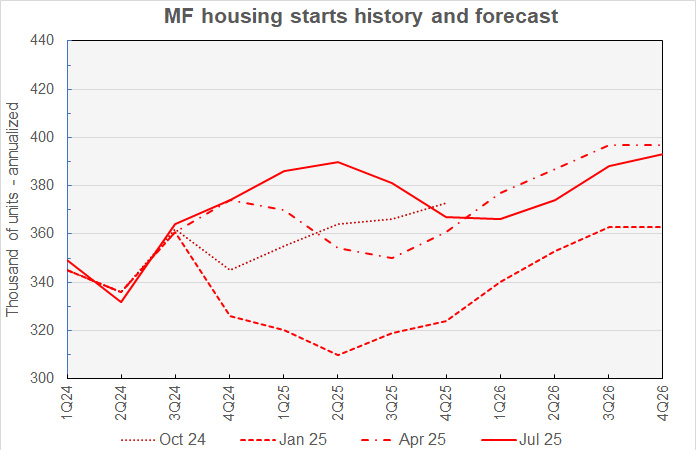
While Fannie Mae’s forecasters had revised their estimates for multifamily starts in 2025 higher in the last several forecasts, they reversed course this month. Their starts forecasts for 2026 were also revised lower.
After being revised higher by a combined 109,000 annualized starts over the past 5 forecasts, the Q2 2025 multifamily starts forecast was lowered by 29,000 annualized units this month. This was the largest revision made to quarterly starts estimates in this month’s forecast. Starts are still expected to reach a high point in Q2 2025 although the level is now expected to be 390,000 units. Multifamily starts are then forecast to decline to a low of 366,000 annualized units in Q1 2026, before rising again.
For reference, the most recent new residential construction report from the Census Bureau had multifamily starts running at a seasonally adjusted annualized rate of 386,000 units in Q1 2025. Multifamily starts ran at an annualized rate of 408,000 units in Q2. The Q2 results are considered preliminary and are likely to be revised.
Looking at yearly forecasts, the predicted number of multifamily starts for 2025 was revised lower by 16,000 units to 381,000 units. The forecast for multifamily starts in 2026 was revised lower by 12,000 units to 380,000 units.
Single-family starts forecast generally higher
The current forecast for single-family housing starts is shown in the next chart, below, along with three other recent forecasts.
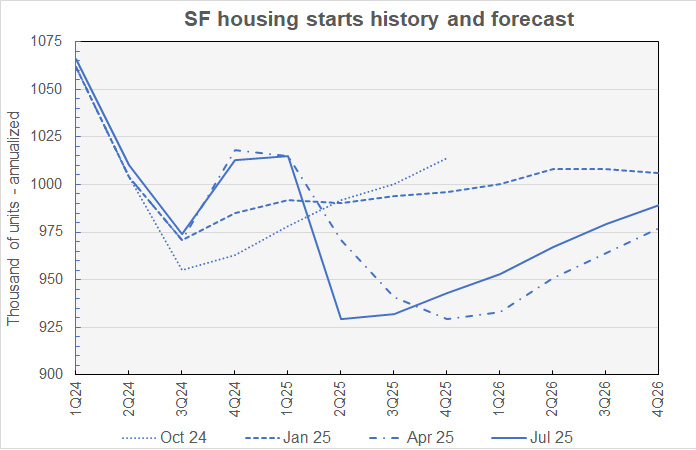
While the single-family starts quarterly forecast for Q2 2025 was revised lower, subsequent quarterly forecasts were revised higher this month. The Q2 2025 forecast fell 4,000 annualized units to 929,000 units. The forecasts for single-family starts for Q4 2025 through Q4 2026 were each revised upward by between 7,000 and 14,000 units.
The low point for single-family starts going forward is now predicted to be Q2 2025. Starts are forecast to rise from that point and are predicted to reach an annualized rate of 989,000 in Q4 2026. This is up 7,000 units from the level predicted last month.
For reference, the Census Bureau’s new residential construction report put Q1 2025 single-family starts at 1,015,000 annualized units with Q2 starts at 919,000 units.
Looking at full-year predictions, Fannie Mae now expects 5,000 more single-family starts in 2025 than forecast last month at 955,000 units. Fannie Mae now expects 11,000 more single-family starts in 2026 than forecast last month at 972,000 units.
GDP growth forecasts mixed
The next chart, below, shows Fannie Mae’s current forecast for Gross Domestic Product (GDP) growth, along with other recent forecasts.
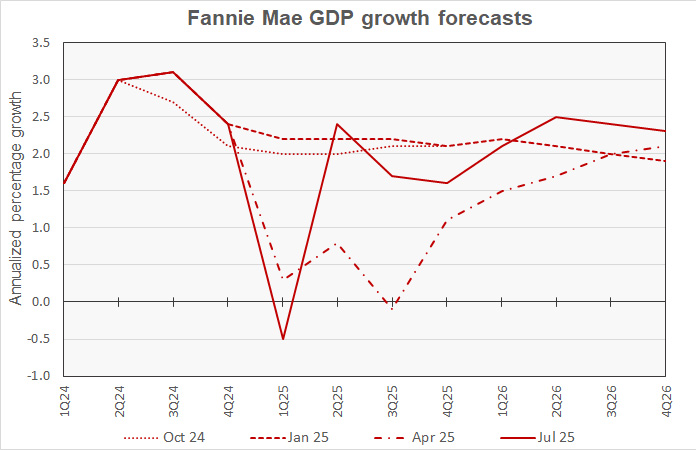
The forecast for GDP growth in Q2 2025 was revised lower, dropping 0.8 percentage points to +2.4 percent. The Q3 2025 forecast was left unchanged while forecasts for subsequent quarters were mostly raised.
Fannie Mae’s forecasters now expect year-over-year GDP growth to be 1.3 percent in 2025, down 0.1 percentage point from the rate predicted last month. They expect 2.3 percent growth in 2026, up 0.1 percentage point from their last prediction.
For reference, the July 18 release of the GDP Now estimate from the Atlanta Fed indicates that Q2 2025 GDP growth is currently running at 2.4 percent. This is down 1.0 percentage point from the month-ago reading.
PCE Inflation forecasts mostly lower
The next chart, below, shows Fannie Mae’s current forecast for the chained personal consumption expenditures (PCE) inflation rate, along with three other recent forecasts.
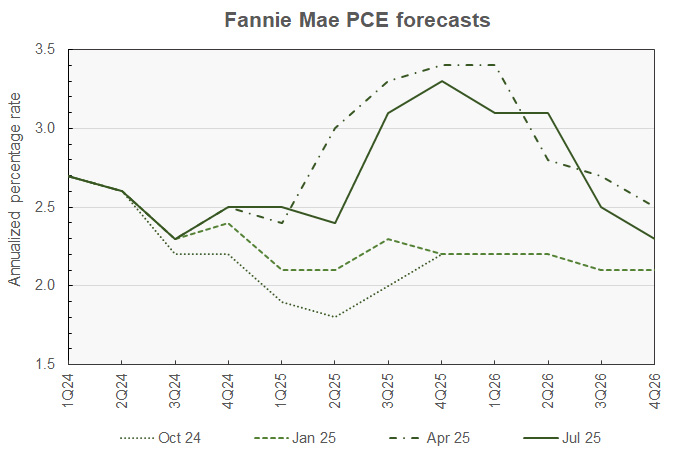
This month’s revisions to Fannie Mae’s quarterly PCE inflation forecasts were mostly to the downside, but none were larger than 0.1 percentage point.
Fannie Mae’s prediction for the year-over-year inflation rates in Q2 and Q3 2025 were each revised 0.1 percentage points lower, to 2.4 and 3.1 percent respectively. Their predicted inflation rate for Q2 2026 was raised 0.1 percentage point while that for Q4 2026 was lowered 0.1 percentage point.
For reference, the Bureau of Economic Analysis estimated that PCE inflation was running at 2.3 percent in May 2025.
Fannie Mae now expects year-over-year PCE inflation of 3.3 percent in 2025, falling to 2.3 percent in 2026.
Employment growth forecast largely unchanged
The next chart, below, shows Fannie Mae’s current forecast for employment growth, along with three earlier forecasts. Employment growth is our preferred employment metric since job gains, along with productivity gains, drive economic growth. By contrast, the unemployment rate depends on employment but also on the labor force participation rate. Either rising employment or falling labor force participation can drive the unemployment rate lower, but only the former would contribute to economic growth.
Note that the population estimates upon which the employment data is quoted were updated in January, so the figures from the earlier forecasts may not be directly comparable to those from the more recent forecasts.
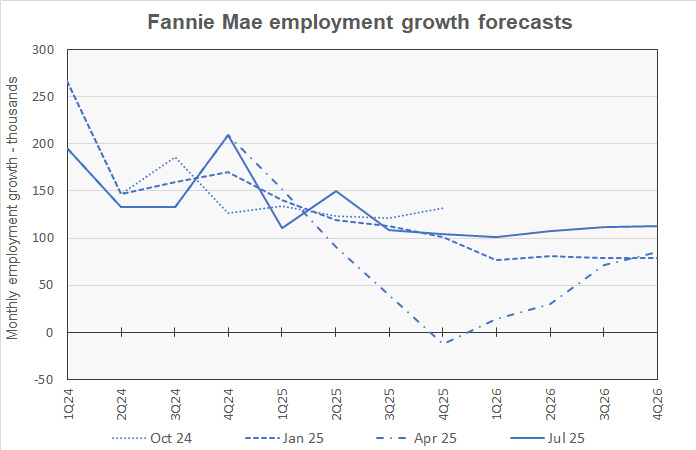
The forecasters revised their estimates for employment growth in Q2 2025 higher, increasing it by 11,000 jobs per month to 150,000 jobs per month. This was the largest change made to quarterly estimates in this month’s forecast. It matches the figure derived from the business survey in the July Employment Situation Report from the Bureau of Labor Statistics.
The forecasters generally revised their predictions for employment growth lower through the rest of the forecast horizon, although Q1 and Q4 2026 job growth forecasts were each revised higher by 1,000 jobs per month. Other quarterly predictions were revised lower by between 2,000 and 7,000 jobs per month.
Employment growth in 2025 is expected to be 1,400,000 jobs while that for 2026 is expected to be 1,300,000 jobs. These figures are unchanged from those in last month’s forecast.
The Fannie Mae July forecast can be found here. There are links on that page to the detailed forecasts and to the Economic Developments Commentary.


